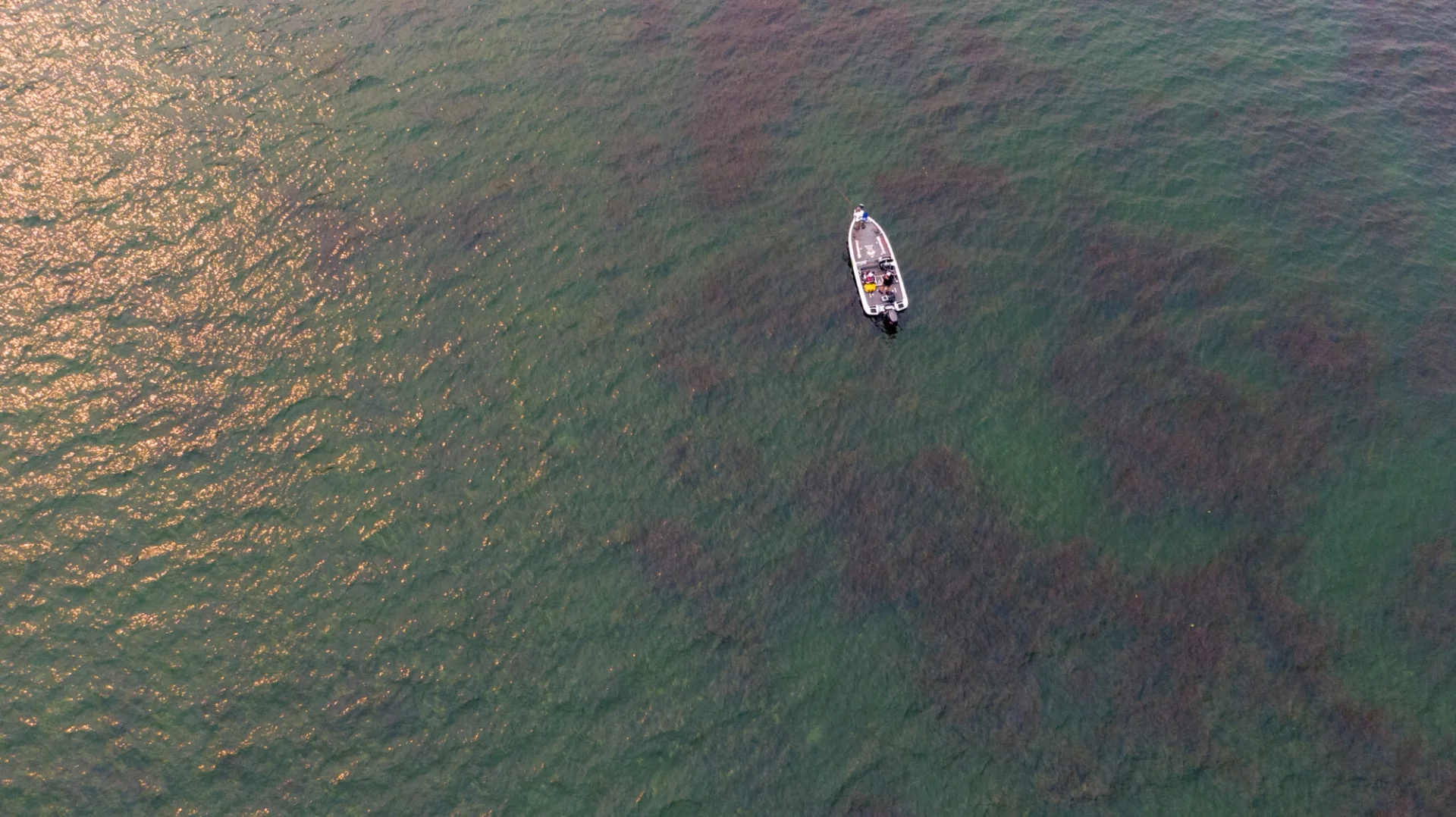A Pro’s Guide to Battling the Dog Days of Summer

How James Elam Adjusts His Summertime Gameplan to Find Bass Consistently
Late summer bass fishing is often referred to as the “dog days” for a reason. Air temps have been bumping triple digits throughout the months of July and August, baking the water’s surface to a boil, and the bass seem to go into a funk, making many anglers wait for the first cool front of the fall before venturing back out on the water.
Major League Fishing Pro, James Elam, can’t do anything about the heat; however, he does tweak his game plan from his midsummer strategy to stay on the bite in late summer.

The Oklahoma pro starts by searching out schools of shad with his Lowrance electronics, focusing his search in the middle of deep coves, the mouths of major creeks, as well as the deeper flats along the main lake area. Once the shad are located from the driver’s seat, Elam will move to the front deck to drop the trolling motor and start scanning the area with Active Target looking for individual bass feeding below or within the balls of shad.
His approach to catch suspended bass is a 1-2 punch, depending upon the mood of the bass. As he details, “I’ll start with a 4-5” LIVETARGET Slow Roll-Shiner rigged on a ⅜ oz Mustad Impact Spring Lock Jig Head. The 5” is easier to see on forward sonar and imitates those larger shad extremely well and I’ll go with a shad pattern such as Silver Pearl”. Elam explains that the technique is rather simple: maintain a good cast away from the fish to avoid spooking with the trolling motor, casting beyond the fish and swimming the paddle tail design of the Slow-Roll Shiner just under the shad, but above the bass below.
“The goal is to make that Ghost Minnow appear as a stray baitfish that’s wandered away from the bigger school”, he adds. “Just keep a slow, steady retrieve and if you see the bass following on forward sonar, but not committing, increase the retrieve speed to make them think the shad is getting away. That usually seals the deal”.
If the bass are reluctant to chase the paddle tail swim bait, Elam goes more “finesse” in his swim bait set up, incorporating the subtle action of the LIVETARGET Ghost Tail Minnow. “The Ghost Tail Minnow is actually a drop shot bait”, he states, “but I rig it on a homemade ⅛ oz jig head and use it for ‘hover strolling’, which has become really popular on the tournament trail”.
With the hover strolling technique, the Ghost Tail Minnow is fished in similar fashion as the paddle tail; however, the minimal action of the Ghost Tail as it’s allowed to pendulum back to the boat, just above the bass, has proven to be a “bite-getter” when other techniques with forward sonar fail.
As he explains, “When fishing this lighter ⅛ oz jig head, it takes longer to get the lure down to the bass, but sometimes that small, subtle profile swimming above them is the only way to get them to eat.”
While Elam admits, both techniques require a good understanding of live sonar technology while watching the shad, bass and the swimbait interact in real time; however, the payoff is a means to keep the action hot… just like the weather.
